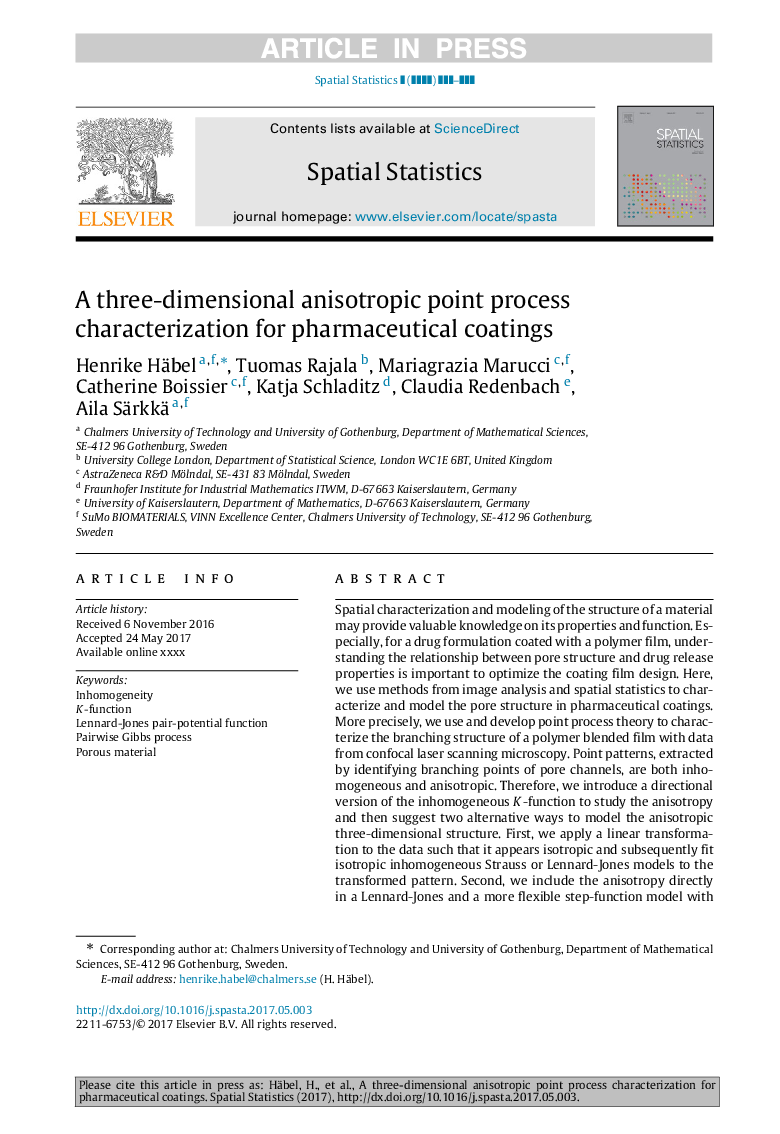| Article ID | Journal | Published Year | Pages | File Type |
|---|---|---|---|---|
| 7496443 | Spatial Statistics | 2017 | 15 Pages |
Abstract
Spatial characterization and modeling of the structure of a material may provide valuable knowledge on its properties and function. Especially, for a drug formulation coated with a polymer film, understanding the relationship between pore structure and drug release properties is important to optimize the coating film design. Here, we use methods from image analysis and spatial statistics to characterize and model the pore structure in pharmaceutical coatings. More precisely, we use and develop point process theory to characterize the branching structure of a polymer blended film with data from confocal laser scanning microscopy. Point patterns, extracted by identifying branching points of pore channels, are both inhomogeneous and anisotropic. Therefore, we introduce a directional version of the inhomogeneous K-function to study the anisotropy and then suggest two alternative ways to model the anisotropic three-dimensional structure. First, we apply a linear transformation to the data such that it appears isotropic and subsequently fit isotropic inhomogeneous Strauss or Lennard-Jones models to the transformed pattern. Second, we include the anisotropy directly in a Lennard-Jones and a more flexible step-function model with anisotropic pair-potential functions. The methods presented will be useful for anisotropic inhomogeneous point patterns in general and for characterizing porous material in particular.
Related Topics
Physical Sciences and Engineering
Earth and Planetary Sciences
Earth and Planetary Sciences (General)
Authors
Henrike Häbel, Tuomas Rajala, Mariagrazia Marucci, Catherine Boissier, Katja Schladitz, Claudia Redenbach, Aila Särkkä,
